I don’t make a lot of really, really weird things on this blog. You won’t see deep-fried tarantulas or monkey brains. This is because I feel strongly that regular people (and by that I mean regular-really-special-all-kinds-of-wonderful people like you), living in average towns (that they love with all their heart, like you do) should be able to replicate this adventure without pulling their hair out by the roots.
Simply put: the more people cooking the world, the better.
And I’m here to make it as easy as possible.
That being said, sometimes I run across really strange recipes made with really normal ingredients. These are like culinary goldmines for the stovetop traveler.
Unique learning experiences that are not an impossible nightmare to cobble together.
Fun, fun, fun.
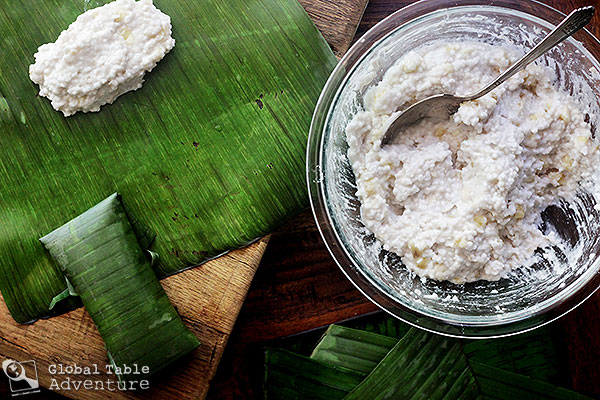
Take today’s recipe from Papua New Guinea: Saksak, a.k.a. Sago Dumplings. This slippery treat is made with nothing more than tapioca, bananas and sugar, wrapped up in a banana leaf “blanket” and swimming in a warm coconut sea.
I found everything for the Saksak in our grocery store except for the banana leaves. Those were a half mile away at the Latin grocer.
Super convenient.
As for wrapping them up in packets? Good messy fun with just a little dash of weird. In the best possible way.
Inspired by a recipe found in the World Cookbook for Students and one on Nusantara’s Blog, which offers up a variation made with shredded coconut.
Ingredients:
2 cups tapioca pearls
3 bananas, chopped
3 Tbsp sugar, or to taste
banana leaves or aluminum foil for wrapping
1-2 cans coconut milk, as desired for serving (I used light)
Method:
Recipes like this are hard to quantify because locals generally make it by feel (thanks to years of experience).
To prep the tapioca, measure it into a bowl and cover with water. Immediately drain off what you can without using a strainer. This will leave enough water in the bowl to get them hydrated.
Not very scientific, but it works.
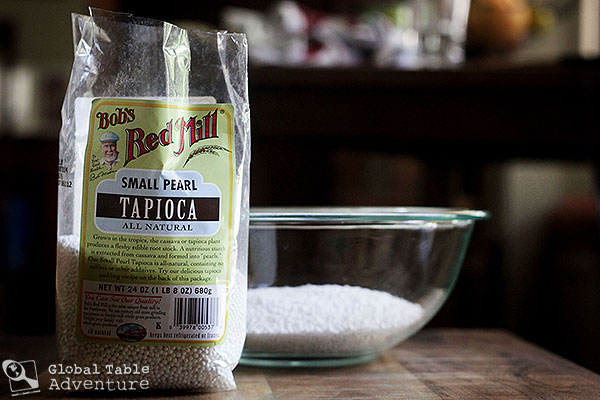

Add in the quartered and chopped banana and sprinkle on a snowfall of sugar. Squish and mix with hands until everything is evenly distributed. Take a little taste for sweetener and adjust as you’d like.
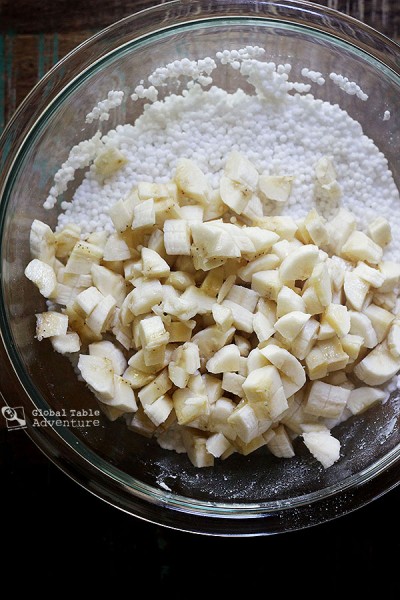
Place a few scoops on a banana leave and wrap up in a rectangular packet.

Note: banana leaves must be passed over a flame for a few seconds to soften before use. This will make sure they don’t crack as you fold and roll up your banana sago packets. You’ll see the banana leaf change color to a shiny green when it’s ready to use.
Steam the packets for about 15-20 minutes. You can peek into one of them to check for doneness. You’ll know they are cooked when the sago balls are completely translucent translucent with no traces of white (except for the banana pieces).
Refrigerate the packets until cool. Otherwise it’ll be next to impossible to remove them from the banana leaf.
Unwrap and serve in warm, silky coconut milk bath.
Take small nibbles. The dumplings will be firm and chewy, yet slippery… The flavor is mild, dominated by the banana’s subtle sweetness.
So I guess it’s true.
From time to time I do like to dip out toes a little bit into the slippery waters of the weird.
And, in the spirit of the unusual, let’s enjoy these by the ash dunes of Papua New Guinea.
P.S. Are you in?
- 2 cups tapioca pearls
- 3 bananas , chopped
- 3 Tbsp sugar , to taste
- banana leaves -OR-
- aluminum foil , for wrapping
- 15-30 ounces coconut milk , whole or light
- To prep the tapioca, measure it into a bowl and cover with water. Immediately drain off what you can without using a strainer.
- Add in the quartered and chopped banana and sprinkle on sugar.
- Squish and mix with hands until everything is evenly distributed. Take a little taste for sweetener and adjust as you'd like.
- Steam the packets for about 15-20 minutes. You'll know they are cooked when the sago balls are completely translucent translucent with no traces of white (except for the banana pieces).
- Refrigerate the packets until cool.
- Unwrap and serve in warm, silky coconut milk bath.
Banana leaves must be passed over a flame for a few seconds to soften before use. This will make sure they don't crack as you fold and roll up your banana sago packets. You'll see the banana leaf change color to a shiny green when it's ready to use.


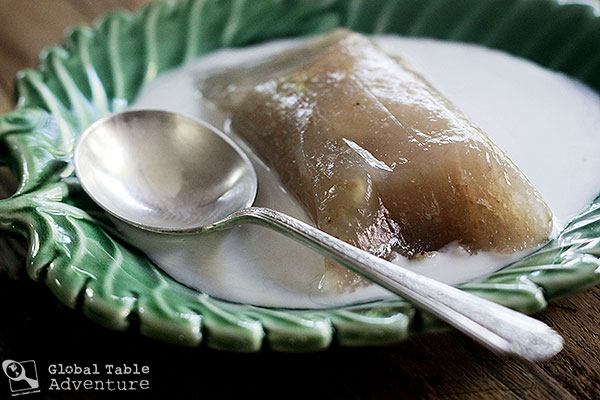


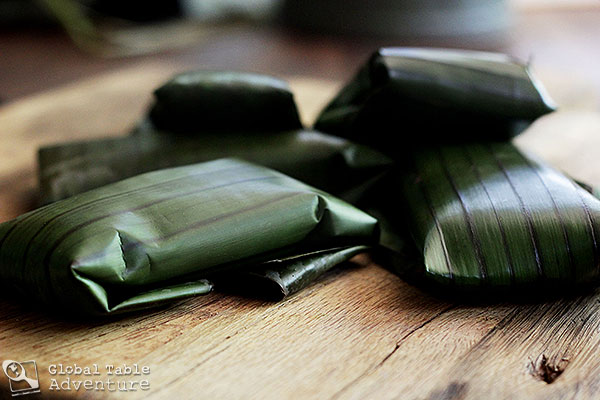

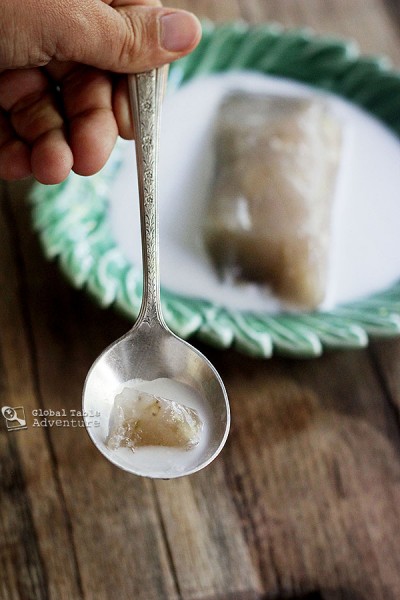

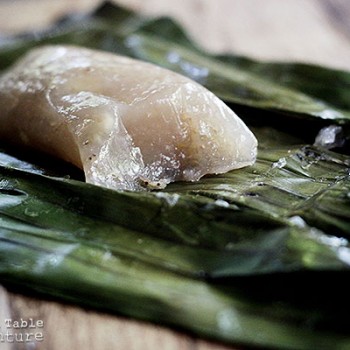

Pingback: Green is the New White: Saksak, or Tapioca and Banana Dumplings | The Hungary Buddha Eats the World